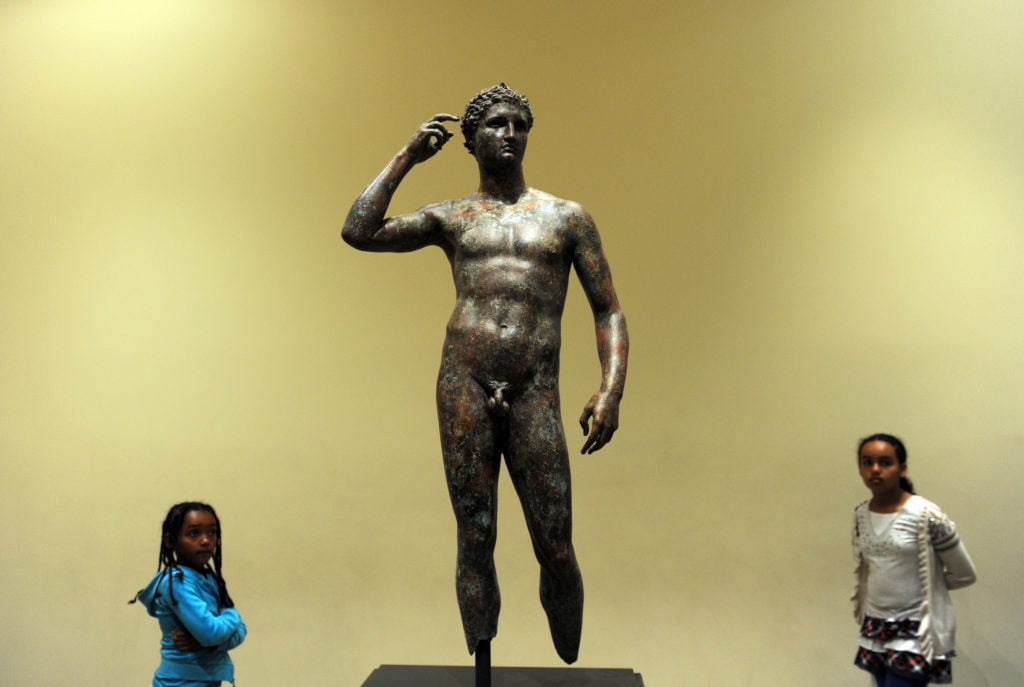Art World
The Getty Will Fight to Keep the Victorious Youth in Los Angeles
The US museum will appeal an Italian court's ruling that the Greek bronze belongs in Italy.

The US museum will appeal an Italian court's ruling that the Greek bronze belongs in Italy.

After years of legal back and forth between a small courtroom in the Italian city of Pesaro and the country’s Supreme Court, an Italian magistrate has ruled that a sculpture in the Getty collection should be repatriated to Italy. But the Getty is determined to fight on and keep the life-size Greek bronze on the grounds that it was recovered in international waters.
The Italian magistrate Giacomo Gasparini upheld previous court decisions made in 2010 and 2012, and on June 8 rejected the Getty’s appeal against an order of confiscation that was based on the work’s illegal exportation from the country several years before it was purchased by the museum.
The Statue of a Victorious Youth, otherwise known as the Getty Bronze or the Athlete of Fano, was found in the ocean by Italian fishermen in 1964, who brought the statue into the Italian city of Fano without declaring it to Italian customs. The fishermen later sold the statue for around $4,000 to a local antiquities dealer, after which it was smuggled from the country.
The Getty, which bought the work in 1977 for $3.95 million, maintains it was a legitimate purchase and plans to appeal the decision of the Supreme Court, which can be done under Italian law.
Ron Hartwig, a spokesperson for the J Paul Getty Trust, says in a statement that the Getty is “disappointed” in the ruling and will continue to defend its legal right to the statue, insisting that the work was discovered in international waters and purchased by the museum “years after Italian courts concluded there was no evidence that the statue belonged to Italy.”
The Getty spokesperson further argues that the statue is not part of Italy’s cultural heritage. “Accidental discovery by Italian citizens does not make the statue an Italian object,” Hartwig says. “Found outside the territory of any modern state, and immersed in the sea for two millennia, the Bronze has only a fleeting and incidental connection with Italy.”
The sculpture was likely made between 300 and 100 BCE and depicts a young man standing with his weight on his right leg, crowned with an olive wreath, the prize given to winning Olympic athletes. It is thought to have been lost at sea when a boat carrying it from Greece to Italy sank.